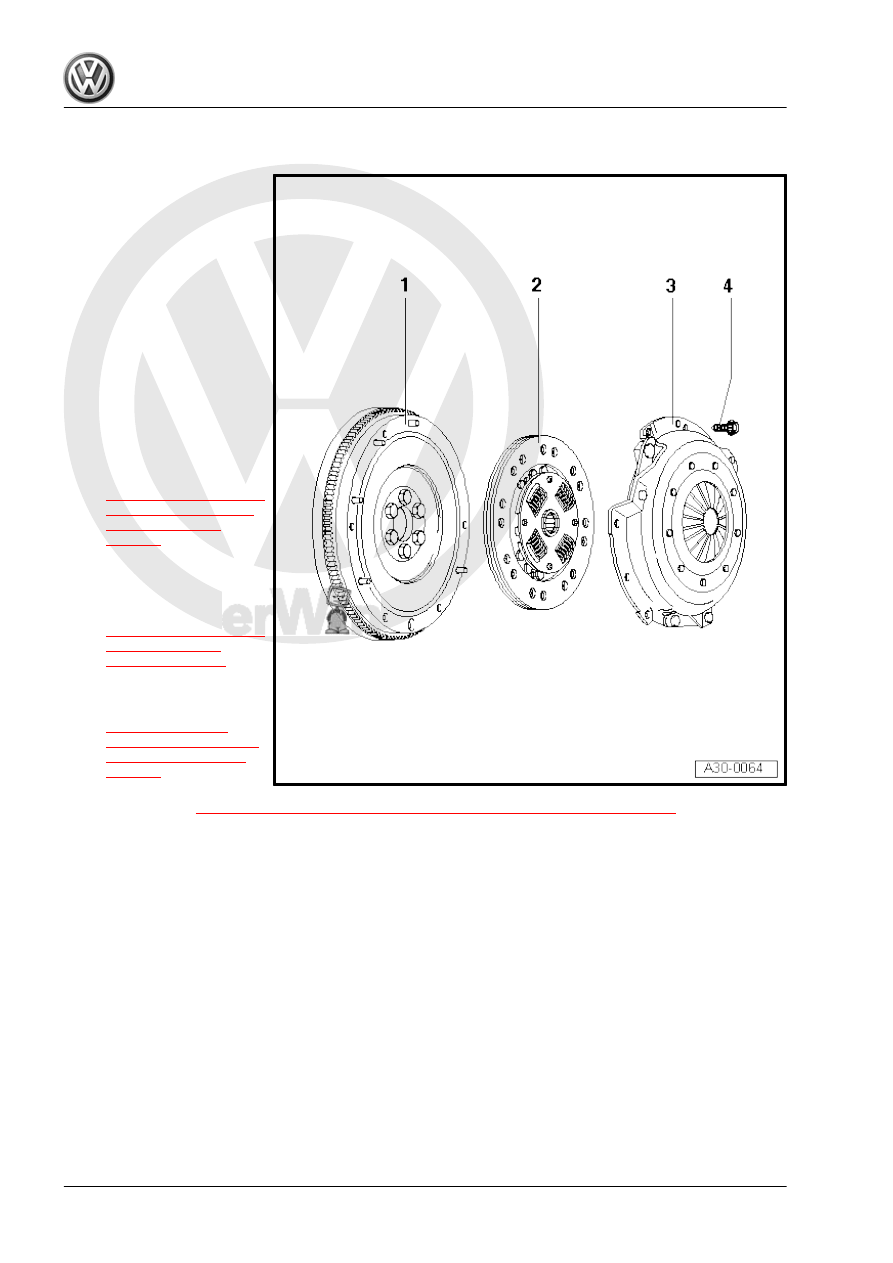Volkswagen Golf / Golf GTI / Golf Variant. Service manual - part 493

2.2.3
Overview - Clutch, with Single Flywheel
1 - Flywheel
❑ Make sure it fits secure‐
ly on the centering pins
❑ Keep the clutch lining
contact surface free of
grooves, oil and grease
❑ Removing and instal‐
ling. Refer to ⇒ Engine
Mechanical, Fuel Injec‐
tion and Ignition; Rep.
Gr. 13 ; Cylinder Block,
Transmission Side; Fly‐
wheel, Removing and
Installing .
2 - Clutch Plate
❑ Allocation. Refer to the
Parts Catalog.
❑ Centering. Refer to
3 - Pressure Plate
❑ Check the ends of the
diaphragm spring. Refer
to
❑ Checking the spring
connections and rivet
connections. Refer to
❑ Removing and instal‐
ling. Refer to
⇒ “2.3.3 Clutch, Removing and Installing, with Single Flywheel”, page 52
4 - Bolt
❑ M6: 13 Nm
❑ M7: 20 Nm
❑ Loosen and tighten in small steps and in diagonal sequence.
❑ Allocation. Refer to the Parts Catalog.